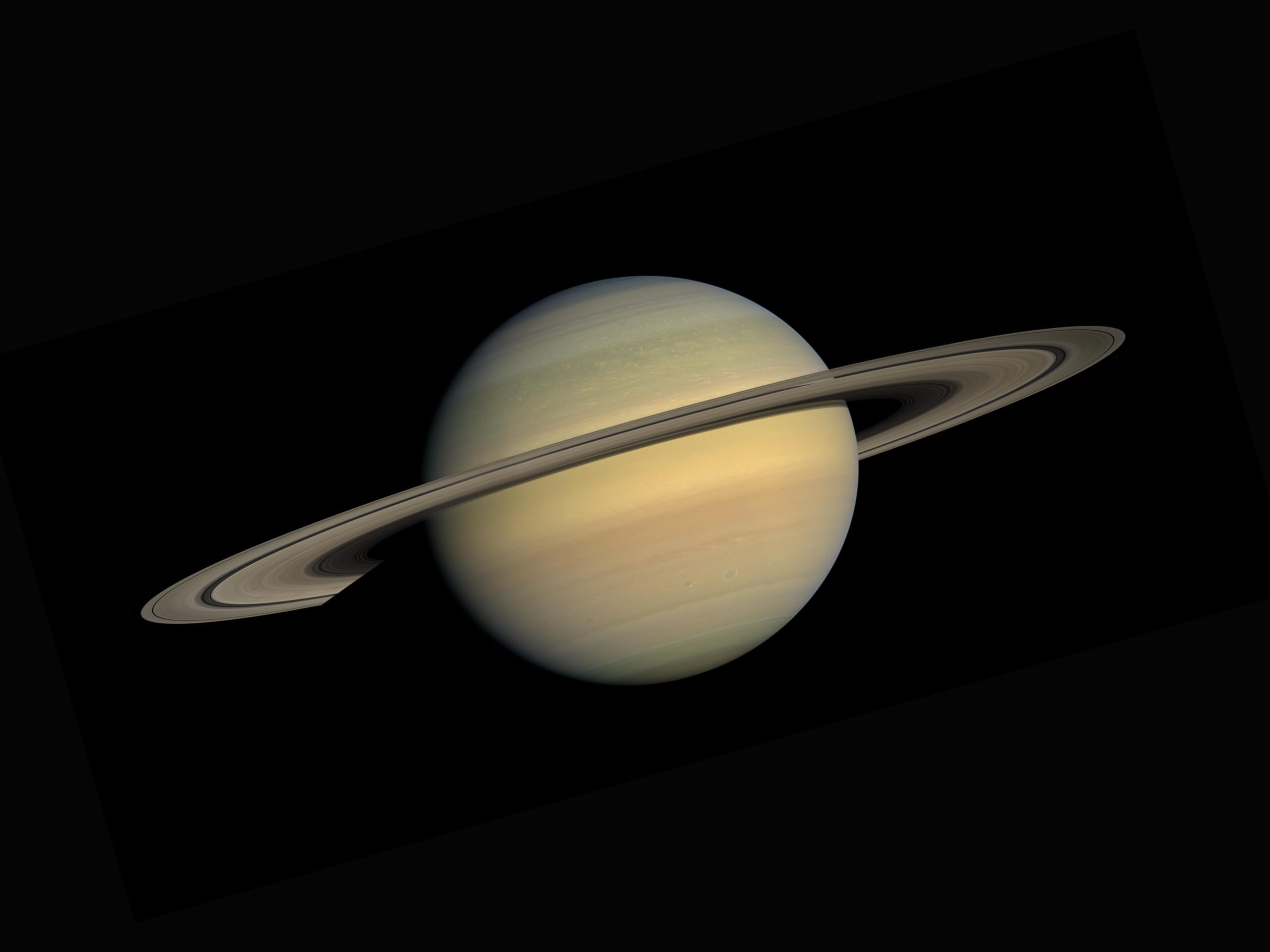Saturn, the second-largest planet in our solar system, is known for its mesmerizing rings that encircle the planet. These rings have fascinated astronomers and space enthusiasts for centuries, and their origin and composition continue to be a subject of scientific study and speculation.
First observed by Galileo Galilei in 1610, Saturn’s rings are made up of countless particles of ice, rock, and dust. They range in size from tiny grains to large boulders, and they orbit around Saturn in a flat, disk-like structure. The rings extend over 170,000 miles from the planet’s center, but they are remarkably thin, with a thickness of only about 30 feet.
One of the most intriguing aspects of Saturn’s rings is their stunning appearance. When viewed from Earth, they appear as a series of concentric circles, with distinct gaps known as divisions. These divisions are caused by the gravitational forces exerted by Saturn’s many moons, which create areas of greater or lesser density within the rings.
Scientists believe that the rings of Saturn were formed billions of years ago, during the early stages of the planet’s formation. It is thought that a moon or a comet came too close to Saturn and was torn apart by the planet’s gravitational forces. The debris from this event then formed the rings that we see today.
While Saturn’s rings are predominantly made of ice, they also contain traces of other materials, such as rock and dust. The exact composition of the rings varies depending on their location within the ring system. Some regions are dominated by ice particles, while others have a higher concentration of rocky material.
Over the years, several missions have been sent to study Saturn and its rings up close. The Cassini-Huygens mission, launched in 1997, provided scientists with a wealth of information about the planet and its rings. The mission revealed intricate details about the structure and dynamics of the ring system, as well as the presence of small moonlets and propeller-like features within the rings.
Despite the extensive research conducted on Saturn’s rings, many mysteries still remain. Scientists are particularly interested in understanding how the rings have managed to maintain their stability over billions of years. The gravitational interactions between Saturn and its moons play a crucial role in shaping and maintaining the rings, but the exact mechanisms involved are not yet fully understood.
Studying Saturn’s rings not only provides insights into the formation and evolution of our own solar system but also offers valuable information about the processes that occur in other planetary systems throughout the universe. By unraveling the mysteries of Saturn’s rings, scientists hope to gain a deeper understanding of the fundamental processes that shape the cosmos.

